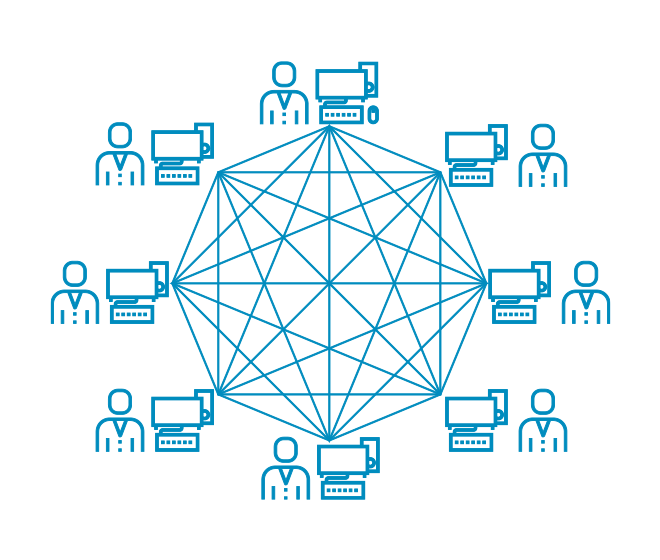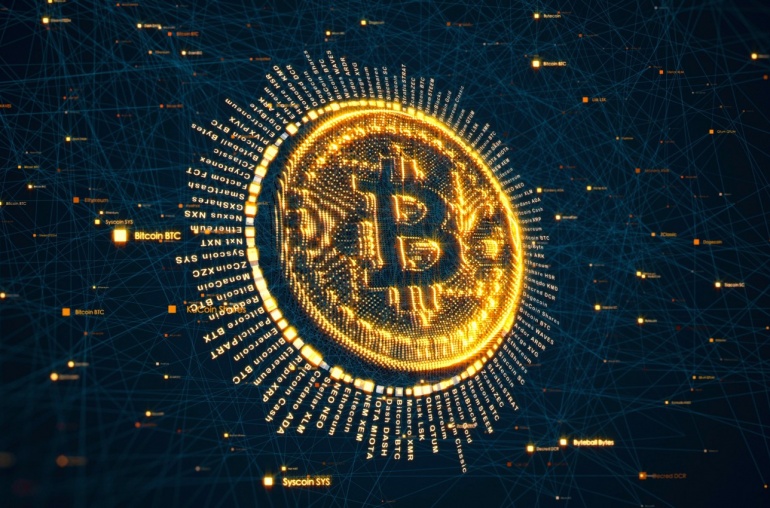What Is A Node? How does it work with Blockchain?
If you’ve done any research on “cryptocurrency” or “Blockchain” in the Internet environment, you’ve probably crossed paths with “Node.” The structures we call nodes have very important tasks to protect the integrity of the blockchain. To put it simply, the Node is a copy of the blockchain that exists only on a single computer or other hardware device.
These nodes are basically copies of notebooks that people use to track cryptocurrencies that occur on the blockchain. If you want to create a new node, you can perform this operation in a simple way. You can also obtain a copy of the entire transaction history of the blockchain for any particular cryptocurrency or for other purposes, entirely up to your imagination. But here’s the problem: you need a lot of space and memory to run these nodes. Because the block stacks may contain a lot of data. Therefore, anyone who wants to create a node should be able to handle all this data.
Full Node and Light Node
A full Node is a complete list of each process that occurs in a blockchain, roughly the whole of the data. The Light Node is only a partial list, holding data for a specific period or part. A full Bitcoin node, for example, would have all of the data contained in each block created on the Bitcoin network since 2009. The Light Node can only have blocks created in a month, or even fewer.
Although Light nodes contain only partial blockchain history, they are somehow connected to Full nodes. So it helps us to make sure that the data they contain remains accurate and can be used effectively.
What Is The Purpose Of Nodes?
The main purpose of the nodes is to maintain the integrity of the blockchain for a given cryptocurrency. Even if there is only one node anywhere in the world, the history of an entire blockchain can be preserved. So the cryptocurrencies that run on the blockchain through the nodes are cyber attacks, power outages or systematic depressions, etc.
Only one node can be enough to protect the transaction history of blockchains, and currently it is possible to actively see hundreds, thousands or even tens of thousands of nodes in blockchain-based cryptocurrencies. The more nodes are found in a blockchain, the safer it becomes.
With these nodes in question, the integrity of the Bitcoin blockchain is highly unlikely to be impaired. But even with an extremely low probability, a possible disruption to the blockchain is theoretically possible. For example, the only way to destroy the Bitcoin blockchain could be by a nuclear war, or by detonating an electromagnetic bomb all over the world at the same time. If there is only one full Node left, an entire blockchain can be reactivated with a simple computer.
Through knots, it becomes impossible for governments, terrorists or any group of people to completely close and erase a blockchain. With nodes distributed around the world, thousands of copies of a blockchain can exist, and deleting each copy one by one is as meaningless as it is impossible.
What are the differences between Full Node and mining?
People running Full Node generally do not receive any payment for doing this job. They help maintain the distribution of books by simply running Full Node and maintaining the blockchain in which the cryptocurrency is running. People running Full Node are usually cryptocurrency enthusiasts who want to make sure that cryptocurrencies are working correctly.
As for mining, it’s like running Full Node. The only difference between running Full Node and mining is that miners use their advanced information processing power to validate cryptocurrencies and create “new blocks” for the blockchain. Blocks are simply validated transaction groups. Miners are also rewarded in various ways in exchange for the services they offer. This prize can be awarded as the cryptocurrency they are digging into, or paid as a transaction fee by the trader.
Mining can be a highly profitable bread-gate for people who are tech savvy and have the right equipment and knowledge. Usually miners run Full Node as part of the mining systems they own. So they both do mining and help maintain the blockchain. That doesn’t mean everyone running Full Node is mining. If you wish, you can only run Full Node without mining and help protect the blockchain.
So Can Cryptocurrencies Work Without Nodes?
If every existing node was simply stopped, disappeared or deleted, there would sadly be no way to tell exactly who had how much cryptocurrency, or what transactions took place at what time between whom. Without nodes, it would not be possible to know if cryptocurrencies were spent twice, and as such all confidence in cryptocurrencies would be destroyed.
As a result it is extremely important that nodes continue to exist. If the Universal Open Source Books cannot be maintained, the blockchain cannot work, and if there are no nodes, blocks and chains cannot be formed.
Does It Matter How Many Nodes There Are?
Technically, a single Full Node preserves the entire transaction history and data of the blockchain, and can be used by reloading as a cryptocurrency as needed. However, the more nodes you have, the more secure your blockchain is. The main reason for this is that nodes are located all over the world in a distributed way. The larger your blockchain, the less risk of any fraud, error or destruction on the chain.
Bitcoin, for example, has an extremely widely distributed network of nodes. There are approximately 30,000 full nodes in this network and all these nodes are spread around the world. Because there are so many nodes, it becomes impossible for people to manipulate the blockchain without being noticed by the other nodes. Fraud will be much easier to create if there is a single one, or perhaps only a handful of nodes involved.
Do People Who Run The Node Get Paid?
It’s unlikely that people will take any charge for running the nodes, at least for Bitcoin. Because a lot of people are already doing it for free. It is not a very difficult task to run a node, but it can be easily done by people who do not have technical knowledge. In addition, interestingly, some people make these transactions as hobbyists. As long as users continue to use the nodes for free, the chances of payment being provided for working nodes will continue to be quite low.
In future periods, it may be possible for people running the node to demand payment for them. If a serious organisation takes place, it may become possible to change cryptocurrency protocols and provide payments to the people running the node.
For example, it is necessary to bring together about 15,000 people from different parts of the world if one is to form a group from the majority of people running Bitcoin nodes. Such a situation hardly makes sense, especially given that many people operate the nodes anonymously, and that the cryptocurrency industry in general has a mechanism for anonymity and Privacy.
How to create and run a Node
Creating and running a Full Node for Bitcoin is a very simple process, contrary to what most people think. To create and run Full Node, all you have to do is download and run the latest Bitcoin Core client version of the entire node. It is also possible to install and run Full Node on multiple different operating systems.
Before you download the Bitcoin Core client version of an entire node, you need to remember that you need to have a place roughly 100 GB in size. You also need to have a good amount of memory.




